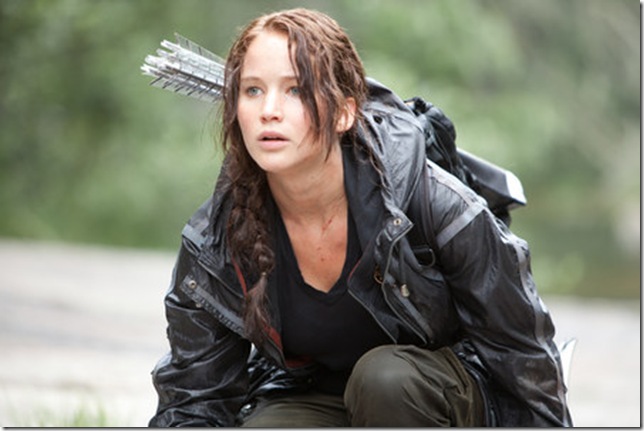Budding young romance and the threat of violent death are powerful dramatic forces, but who knew they were strong enough to get teens to read?
That formula has worked three times now in recent years, first with the Harry Potter books, then the Twilight vampires vs. werewolves trilogy and now with The Hunger Games phenomenon.
Each time, Hollywood followed up the blockbuster best sellers with feature film adaptations, but only now has it got that Holy Grail — a story with sufficient appeal to youngsters as well as those beyond the acne years.
Perhaps, as they say, there are no new stories under the sun, but part of the appeal of The Hunger Games for teens is that they are probably unaware of its antecedents in dystopian literature and films.
Whether or not author Suzanne Collins consciously borrowed from Rollerball, The Truman Show and Lord of the Flies, there are distinct echoes of each of them in her primal tale.
As you surely know by now, The Hunger Games takes place in a post-apocalyptic future where a few handfuls of young adults are selected to compete in an annual televised kill-or-be-killed variation on Survivor for the entertainment of the masses. Well-designed for maximum reader/viewer identification is the story’s heroine, Katniss Everdeen, a deadly archer who volunteers for the so-called “reaping” in place of her younger, weaker sister. So she heads off to the Capitol, along with fellow District 12 contestant, Peeta Mellark (Josh Hutcherson of The Kids Are All Right), soon to be Katniss’s heartthrob.
Director/co-screenwriter Gary Ross (Pleasantville, Seabiscuit) takes his time establishing the world of Panem and its futuristic touches and the colorful, somewhat cartoonish characters — kewpie doll chaperone Effie Trinket (Elizabeth Banks), handler coach Haymitch Abernathy (Woody Harrelson) and unctuous, blue-haired emcee Caesar Flickerman (Stanley Tucci). These early textural details are every bit as interesting as the games themselves, though Ross might have pared away at the film’s first hour, before the blood gets spilled.
As has been much reported, Ross was obligated to the studio to deliver a film with a rating no stronger than PG-13. While that suggests the need to dilute the book’s violence, Ross instead uses a jumpy, hand-held camera which blurs the action to the point of unrecognizability. His solution is something of a cheat, but it does manage to convey the brutality while avoiding any explicit depiction.
Like all good science fiction, The Hunger Games holds a mirror up to our current existence, pointing a finger at our bloodthirsty tendencies and wayward morality. You have to wonder what messages teens take away from a book or film like The Hunger Games, but I’ll bet the attraction is more about the romance than the social commentary.
Either way, the movie works or doesn’t based on the actress playing Katniss. The search for that actress rivaled the hunt for Gone With the Wind’s Scarlett O’Hara, but ultimately the plum role went to Jennifer Lawrence (Oscar nominee for Winter’s Bone, playing another self-assured young woman, sorely tested by the challenges she faced). While she is hardly a box office name, she manages to carry the picture and let us inside Katniss’s head to access her emotional struggles, the test of a film actress.
Chances are, after two more Hunger Games films, Lawrence will be as bankable as any young actress and then we will see how she handles success and what she does with it.
The Hunger Games, beyond being a money machine, is a better film than it needed to be. For that you have to credit Ross, without even knowing what battles he had to fight with Lionsgate to get the film he wanted to the screen. And, much to my surprise, I look forward to the remaining two films in the saga.
THE HUNGER GAMES. Director: Gary Ross; Cast: Jennifer Lawrence, Stanley Tucci, Woody Harrelson, Elizabeth Banks, Josh Hutcherson; Distributor: Lionsgate; Rating: PG-13; now playing in area theaters.
